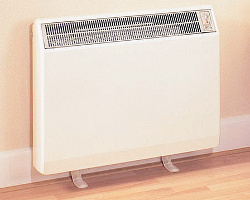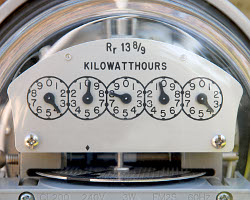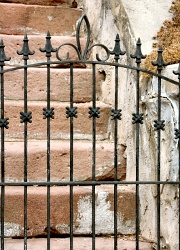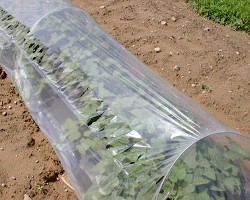 Carole sent an email asking about storage heater bricks:
Carole sent an email asking about storage heater bricks:
does anyone know what to do with old storage heater bricks? Just had 4 old heaters taken out and I suspect the plumbers will just take the lot to the dump so want to see if I can save them and reuse them or find somewhere that can recycle them.
In one of my past lives, I was a labourer, helping renovate student houses during a summer holiday, and we had to remove some storage heaters once and let me tell you, those boys are HEAVY.
As a minimum, I’d offer them on Freecycle/Freegle in case someone can use them … for something. The only thing I can think of on this delightful Monday morning is infill for landscaping but I’m sure there are more useful reuses for them than that…
Any ideas? What about recycling options?
Categories: household, items
Posted by louisa
on 7 February 2011
 We’ve had an email from Lauren:
We’ve had an email from Lauren:
I’m a knitter but I can’t throw away the ends of yarn, not matter how small! I’ve got a carrier bag full of ball ends, some a couple of yards long, most less than a foot. Any ideas?
The longer pieces could be used for the inner rings of granny squares if you crochet too or mini-crafts both knitted or crocheted – if you’re on Ravelry, on the advanced search you can specify projects by yardage — I just did a search for projects using 5yards or less, and got over 400 results (including, I kid you not, a penis shaped chapstick holder!). The shorter pieces could be used for the odd few stitches of decoration such as eyes & noses on soft toys or tapestry/embroidery work. If you had lots and lots of shorter pieces, they could be used as stuffing for small toys.
Away from sewing & crafts, I used pretty yarn instead of string for tying up parcels etc and for clothes repair/enhancement – a little colour-clash darning, sewing on chunky buttons or used for adding hanging loops onto scarves/light jackets that come without them.
Any other suggestions? If you knit/crochet, what do you do with your scraps?
Categories: clothes and fabric, hobbies, items
Posted by louisa
on 4 February 2011
 Our “how can I reduce this?” questions are often about how to reduce physical waste but it’s important to stop wasting power too – and I’ll like to hear your tips & helpful hints on this: how can I reduce electricity wastage in the kitchen?
Our “how can I reduce this?” questions are often about how to reduce physical waste but it’s important to stop wasting power too – and I’ll like to hear your tips & helpful hints on this: how can I reduce electricity wastage in the kitchen?
Everyone knows not to boil too much water in the kettle – just what’s needed – and most people know to keep their fridge coils free from dust to make them more efficient. We’ve also touched on this topic in the past when talking about using ovens efficiently when baking and about reducing energy usage in the house in general – and we’ve had some great advice. For example:
- Bellen, Rob and chicgeek all recommended using spare oven space to bake potatoes or other root veg for future use; Bellen also suggested roast chicken parts for lunches & chicgeek stews.
- damnthebroccoli suggested planning baking to coincide with other run-of-the-mill oven usage so it’s only on once.
- Bobbie urged us to put lids on a pot, use crock pots/slow cookers and in winter, open the oven door after baking so the warm air escapes into the house rather than being “extracted” outside.
- kittykat advocated using “ice boxes” in the winter – allowing you to turn off your fridge for weeks at a time.
- And Alice has said that if she does accidentally boil a bit too much water, she puts it in a thermos flask to keep it warm so it doesn’t require as much energy to boil again.
All great ideas – do you have anything else to add?
Categories: kitchen, reduce this
Posted by louisa
on 3 February 2011
 Sticking in the garden after yesterday’s “how to make cloches” question, I’m a member of UKVegGardeners and spotted this question on the forum yesterday:
Sticking in the garden after yesterday’s “how to make cloches” question, I’m a member of UKVegGardeners and spotted this question on the forum yesterday:
Anyone got any suggestions, please, on uses for an old wrought iron 3ft square garden gate which has reached the end of its gate life but must have some usefulness left?
Since UKVegGardeners is a community of, well, UK veg gardeners, the suggestions have mostly been about ways to use it in the growing of veg ;) People have suggested using it at the back of a trough for climbers or if you have two of them, making an A-frame for peas. (Someone else suggested a homemade BBQ grill for cooking “jumbo sausages” :) ) I think they’re great suggestions – but wondered if anyone else over here had other ideas to add.
I’ve seen iron gates that are no longer gate-able but still reasonably sound used to patch up fences in a shabby chic way – the spaces let small animals/wildlife nip through but not bigger things.
If it’s pretty wrought iron, I wonder if it could be used to make garden furniture… Depending on how heavy it is, it might be wall mountable and could be used as a hanging rack for tools, watering cans and whatnot.
Any other ideas?
Categories: garden, items
Posted by louisa
on 2 February 2011
 I thought we’d already covered this but apparently not!
I thought we’d already covered this but apparently not!
At the weekend, I made some 4ft by 1ft garden planters from scrap wood – having a lot of fun and saving myself a heap of money in the process. I think I’ll probably use them in our front garden – there are just a few scratty pots of herbs out there and planters like these (I may make a couple more) will make the currently dead space a lot more productive. Around here though, between the slugs & the dismal Yorkshire climate, things either need to be started as seedlings elsewhere or grown under row covers — cloches — for the first few weeks of their lives.
So what do you use for cloches? The tops of plastic bottles make great mini-cloches for individual plants – my dad uses the bottom of the bottles as seedling pots, the tops for seedling protectors when they’re planted out.
But what about for larger areas? I might want to grow stuff in rows and had an idea to make some “hoops” on a made-to-measure frame and cover that with either clear but heavy-ish plastic (for example, the chickens‘ feed bags) or opened out plastic pop bottles (although I’d probably need a lot of them to make it work). Any other ideas? And suggestions for the hoops? I can find scrap wood for the frame but would need some metal strips or plastic tubing, or the like for the hoops – any ideas?
As I’m aiming to minimise my workload – and minimise the waste going to landfill each year – I’d like to make them not only from post-consumer waste but also make them to last for as long as possible — so any suggestions or advice would be greatly appreciated!
Categories: garden, reverse this
Posted by louisa
on 1 February 2011
 Carole sent an email asking about storage heater bricks:
Carole sent an email asking about storage heater bricks:


 We’ve had an email from Lauren:
We’ve had an email from Lauren: Our “how can I reduce this?” questions are often about how to reduce physical waste but it’s important to stop wasting power too – and I’ll like to hear your tips & helpful hints on this: how can I reduce electricity wastage in the kitchen?
Our “how can I reduce this?” questions are often about how to reduce physical waste but it’s important to stop wasting power too – and I’ll like to hear your tips & helpful hints on this: how can I reduce electricity wastage in the kitchen? Sticking in the garden after yesterday’s “how to make cloches” question, I’m a member of
Sticking in the garden after yesterday’s “how to make cloches” question, I’m a member of  I thought we’d already covered this but apparently not!
I thought we’d already covered this but apparently not!














